Found 3050 matches from 1,400 records in about 0.1390 seconds for Write or On or Stomach.
Augmented reality is the fusion of real and virtual reality, usually projecting computer graphics over live video footage in real time. The excellent Osocio blog recently posted two advocacy projects that use augmented reality for outreach.
The first is a cellphone game that shows an animated, virtual bear colliding, falling and otherwise bumbling around the physical environment as viewed through the phone’s camera. The application is part of a campaign on biodiversity by the World Wildlife Foundation in China. The message: forests are fast disappearing, see how wildlife struggles to cope outside its habitat, the fate of wildlife is in your hand.
The other campaign creates a virtual minefield at a shopping mall in Norway to dramatize the importance of mine clearance. Pedestrians pass by a mannequin in UN de-mining gear warning that they are entering a mined area. A computer linked up to an infrared camera detects pedestrian traffic and when a special spot is crossed, speakers hit the pedestrian with the sound of an explosion. Text is then projected onto the floor in front of the pedestrian describing the impact of landmines and soliciting a donation via SMS.
However, the spots on the floor are not entirely random. Via a web site, users are put in the role of the de-mining team. Web users can see the spots of the “mines” projected onto a video of the mall. Users must click the mines to remove them before pedestrians encounter them. If they fail, web users also hear the explosion and watch the pedestrians react.
Together they raise an interesting, larger point: just how much of a visualization project non-profit advocacy and outreach itself really is. I’ve written previously about the importance of the vision thing, but I focused more on individual projects instead of the idea of advocacy generally. In many cases, it boils down to this: advocacy means making visible to an audience some aspect of reality that is off their radar or articulating some hidden reason why things are the way they are... then following up with a proposed solution. That is, projecting an augmented reality followed by a vision a different world — an alternate reality colliding with the existing one. The trick is to make these visions clear, compelling, and actionable.
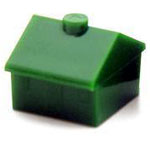 Roger K. Lewis in The Washington Post: “The Wall Street Journal got into the game recently with a report on concepts by four architectural firms that the newspaper asked to imagine the ‘Green House of the Future.’… Speculating about visionary green houses is tantalizing, but much greater benefits accrue at a larger scale.… Focusing on hypothetical designs of free-standing houses can even be a distraction.… No matter how green individual homes are, suburban sprawl is intrinsically anti-green. It generates infrastructure inefficiency; car dependency and rising fossil fuel demand; carbon-emitting, time-wasting road congestion; and, despite availability of inexpensive land at ever-greater distances from jobs, escalating development, construction and public service costs.… Transforming neighborhoods, buildings and infrastructure to accommodate new functions may be the best way for architects and the real estate industry to help create a greener planet.”
Roger K. Lewis in The Washington Post: “The Wall Street Journal got into the game recently with a report on concepts by four architectural firms that the newspaper asked to imagine the ‘Green House of the Future.’… Speculating about visionary green houses is tantalizing, but much greater benefits accrue at a larger scale.… Focusing on hypothetical designs of free-standing houses can even be a distraction.… No matter how green individual homes are, suburban sprawl is intrinsically anti-green. It generates infrastructure inefficiency; car dependency and rising fossil fuel demand; carbon-emitting, time-wasting road congestion; and, despite availability of inexpensive land at ever-greater distances from jobs, escalating development, construction and public service costs.… Transforming neighborhoods, buildings and infrastructure to accommodate new functions may be the best way for architects and the real estate industry to help create a greener planet.”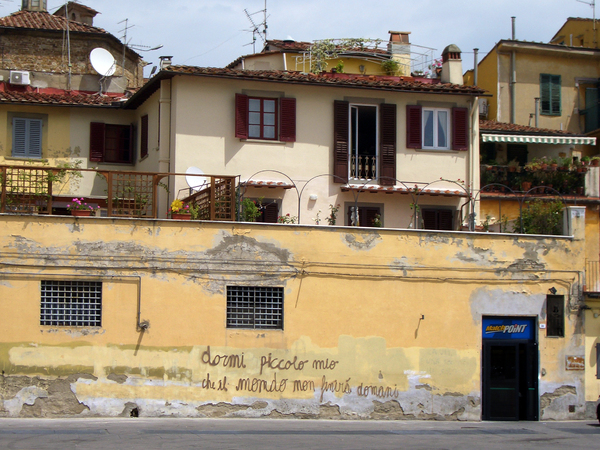
“Sleep my little one, for the world will not end tomorrow.”
Graffito in the piazza in front of the offices of La Nazione, a popular newspaper in Florence. Based on the layers of paint on the wall, it seems graffiti is a popular feedback loop here.
I’m here for the excellent Più design può. More notes soon.
 Nearly a year ago, SocialDesignZine (SDZ) published a blog item about design and the city that found its way to the folks in the Provincial Office of Florence. They were intrigued. So what would you like to do about it? they asked. Send us a proposal.
Nearly a year ago, SocialDesignZine (SDZ) published a blog item about design and the city that found its way to the folks in the Provincial Office of Florence. They were intrigued. So what would you like to do about it? they asked. Send us a proposal.
Gianni Sinni and Andrea Rauch, the team behind SDZ proposed a modest conference: a few critics, a few practitioners discussing design for democracy, society and the city. Then silence for eight months.
Finally, two months before the proposed date, funds were approved and the SDZ team swung into action. Both studios engaged their staff: the hall booked, website designed, print materials designed and produced, travel coordinated, and on May 22 and 23 they hosted Più Design Può, more design can. Attendance was free of charge and over 200 students and designers turned up to hear the lineup of Italian and international speakers. No one from the Office of Florence attended.1
The intersections and gaps between designers, the state, and the public ran throughout the discussions. Renewed attention to public utility graphics in the 1970s helped public offices use design in a more consistent way. Design, they realized, characterizes the relationships between citizens and public administration. Now the emphasis has been turning to how cities can facilitate citizen-to-citizen communication in an accessible, inclusive and sustainable way, to promote and enable participation in both social life and public affairs.
An article I wrote is out now in the Design Issues column of the May/June 2009
Communication Arts. It draws on the material I presented at Conflux in September 2008.
Mapping Power
Using design to get where we want to go
What is power? It’s an abstract dynamic, an engine behind the visible world. Power can be found in relationships, in the flow of resources or information, in signs, symbols and ideas or built into the environment. There’s no doubt that visual media has the power to influence an audience, but visual media can also be used to visualize power itself. Visualizing power is a way of interpreting and understanding it. And this understanding can become a basis for challenging it. Design can be used to describe and locate power, to pressure those who hold power, and ultimately to facilitate and generate power by bringing people together.
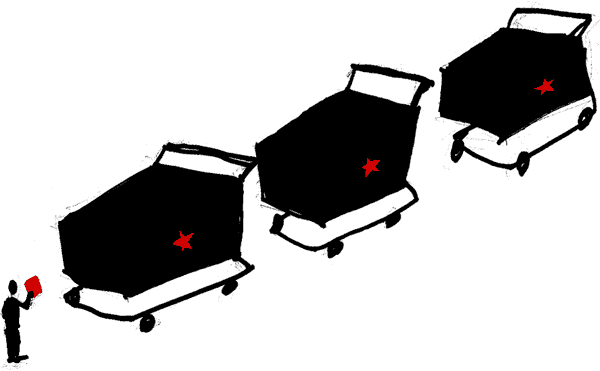
From wikipedia:
The art students who created the [Goddess of Democracy] statue wrote a declaration that said in part:
“At this grim moment, what we need most is to remain calm and united in a single purpose. We need a powerful cementing force to strengthen our resolve: That is the Goddess of Democracy. Democracy… You are the symbol of every student in the Square, of the hearts of millions of people.… Today, here in the People’s Square, the people’s Goddess stands tall and announces to the whole world: A consciousness of democracy has awakened among the Chinese people! The new era has begun! …
The statue of the Goddess of Democracy is made of plaster, and of course cannot stand here forever. But as the symbol of the people’s hearts, she is divine and inviolate. Let those who would sully her beware: the people will not permit this! …
On the day when real democracy and freedom come to China, we must erect another Goddess of Democracy here in the Square, monumental, towering, and permanent. We have strong faith that that day will come at last. We have still another hope: Chinese people, arise! Erect the statue of the Goddess of Democracy in your millions of hearts! Long live the people! Long live freedom! Long live democracy!”
The document was signed by the eight art academies that sponsored the creation of the statue: The Central Academies of Fine Arts, Arts and Crafts, Drama, and Music; the Beijing Film Academy; the Beijing Dance Academy; the Academy of Chines Local Stage Arts; and the Academy of Traditional Music.
The entire statement was written on a long banner placed near the statue, and was read in its entirety by a female student “with a good Mandarin accent” from the Broadcasting Academy.
 AFP reports that the President of Taiwan today suggested that Taiwan adopt the simplified character set used in mainland China. The choice of script is clear political signal to Beijing towards reconciliation. The pro-Independence party is none too pleased. The Taiwanese-government funded Central News Agency is less alarmist, reporting that the President really encouraged learning simplified characters along side traditional characters.
AFP reports that the President of Taiwan today suggested that Taiwan adopt the simplified character set used in mainland China. The choice of script is clear political signal to Beijing towards reconciliation. The pro-Independence party is none too pleased. The Taiwanese-government funded Central News Agency is less alarmist, reporting that the President really encouraged learning simplified characters along side traditional characters.
In last summer’s article on Typography and Nationalism about countries switching scripts, I included this bit about the simplified script:
Chinese script reform has its roots in the 19th century, but Mao Zedong gave it the force of law. (Mao, a calligrapher himself, must have been keenly aware of the power of type.) A month after taking power in 1949, the Communist Party established the Language Reform Committee to simplify written Chinese. The move was intended to promote literacy and unify the nation, but it also worked to crush the many local languages within China’s borders.
The Nationalist-led government of Taiwan, however, never adopted the simplified characters preferring instead to continue using the traditional script. The choice of type has since marked a key cultural wedge between Taiwan and China.
At the intersection of urbanism, DIY, food justice and sustainable agriculture, a crop of artists are making open source gardens and sharing instructions on the web and beyond.
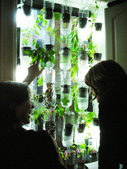 Britta Riley and Rebecca Bray build hydroponic Window Farms from recycled materials. The farms are specifically designed with New York City apartments in mind, and the website invites window gardeners to share photos, plans, designs and information.
Britta Riley and Rebecca Bray build hydroponic Window Farms from recycled materials. The farms are specifically designed with New York City apartments in mind, and the website invites window gardeners to share photos, plans, designs and information.
Edible Estates is a project to convert the classic American front lawn into a productive vegetable garden. Initiated by architect and artist Fritz Haeg on Independence Day, 2005, several prototype gardens were created in different cities across the United States, with instructions and documentation of the prototype gardens posted to the site. 2009 sites have not been announced, but the group is ideally looking for “A monotonous housing development of identical homes... where the interruption of the endless lawn would be dramatic and controversial.”
The Future Farmers’ Victory Gardens project is fought on two fronts: to deliver urban garden kits to urban farmers across San Francisco, and to ultimately develop and maintain a portion of the original Victory Garden space in San Francisco’s Golden Gate Park.
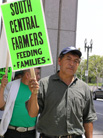 The Garden is a feature-length documentary film about a 14-acre community garden in South Central Los Angeles that emerged in the wake of the 1992 LA riots. The film chronicles the origins of the plot and the South Central Farmers struggle to prevent it from being demolished.
The Garden is a feature-length documentary film about a 14-acre community garden in South Central Los Angeles that emerged in the wake of the 1992 LA riots. The film chronicles the origins of the plot and the South Central Farmers struggle to prevent it from being demolished.
On the more underground tip, Guerilla Gardening is illicit, nocturnal gardening in a space not your own. guerrillagardening.org lists projects, mostly in London, each with a description, location, photos, and budget. The site includes tips for making your own.
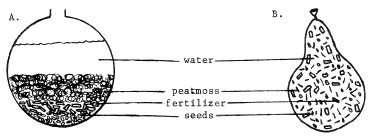
Seed bombing is packing seeds in compressed soil and throwing it into inhospitable or hard to reach places. Artist Liz Christy was the first to use the term in 1973 when she fought urban decay by tossing seed grenades full of sunflower seeds into abandoned New York City lots. Here’s a scan of her original instruction sheet. Christy also co-founded the first community garden in New York City.
 Moss graffiti is also good for damp, urban corners. Anna Garforth has done some beautiful work here. Here’s how to make your own.
Moss graffiti is also good for damp, urban corners. Anna Garforth has done some beautiful work here. Here’s how to make your own.
And onto Gardening 2.0: Landshare is a UK website matching people who want to grown their own food with homeowners with underused space. The site also hosts an active forum for sharing tips and answering questions.
And with your veggies in hand, VeggieTrader is a website for trade, buy or sell homegrown produce.
I’m sure there are many more sites and projects, too. Between the recession and growing concern about industrial food systems, there seems to be something of a renaissance going on here.
page 1 2 3 4 5 6 7 8 9 10 11 12 13 14 15 16 17 18 19 20 21 22 23 24 25 26 27 28 29 30 31 32 33 34 35 36 37 38 39 40 41 42 43 44 45 46 47 48 49 50 51 52 53 54 55 56 57 58 59 60 61 62 63 64 65 66 67 68 69 70 71 72 73 74 75 76 77 78 79 80 81 82 83 84 85 86 87 88 89 90 91 92 93 94 95 96 97 98 99 100 101 102 103 104 105 106 107 108 109 110 111 112 113 114 115 116 117 118 119 120 121 122 123 124 125 126 127 128 129 130 131 132 133 134 135 136 137 138 139 140 141 142 143 144 145 146 147 148 149 150 151 152 153 154 155 156 157 158 159 160 161 162 163 164 165 166 167 168 169 170 171 172 173 174 175 176 177 178 179 180 181 182 183 184 185 186 187 188 189 190 191 192 193 194 195 196 197 198 199 200 201 202 203 204 205 206 207 208 209 210 211 212 213 214 215 216 217 218 219 220 221 222 223 224 225 226 227 228 229 230 231 232 233 234 235 236 237 238 239 240 241 242 243 244 245 246 247 248 249 250 251 252 253 254 255 256 257 258 259 260 261 262 263 264 265 266 267 268 269 270 271 272 273 274 275 276 277 278 279 280 281 282 283 284 285 286 287 288 289 290 291 292 293 294 295 296 297 298 299 300 301 302 303 304 305
[ Back ]
[ Next ]

